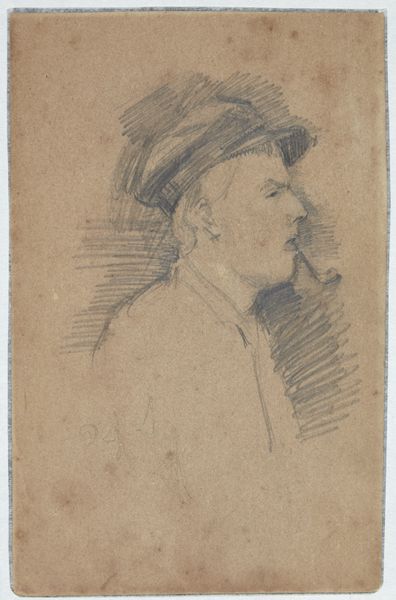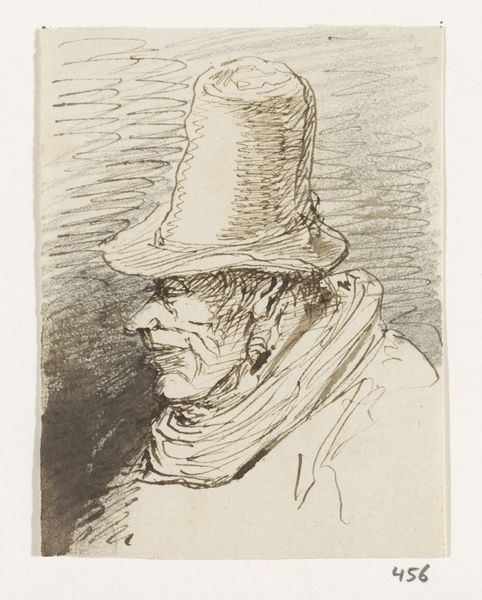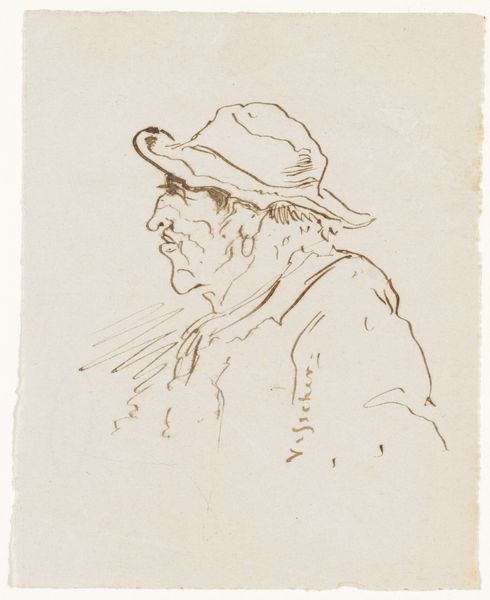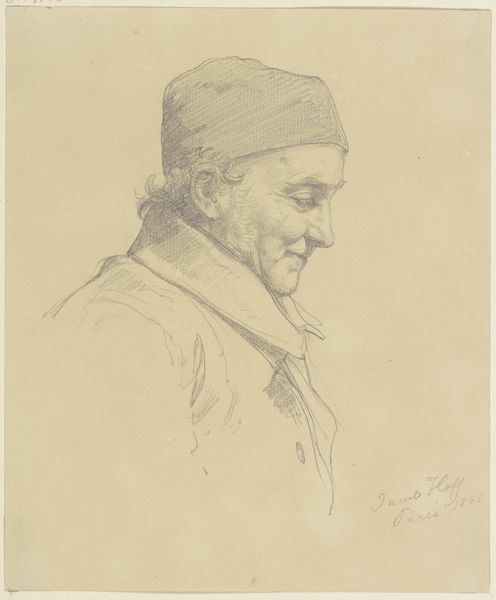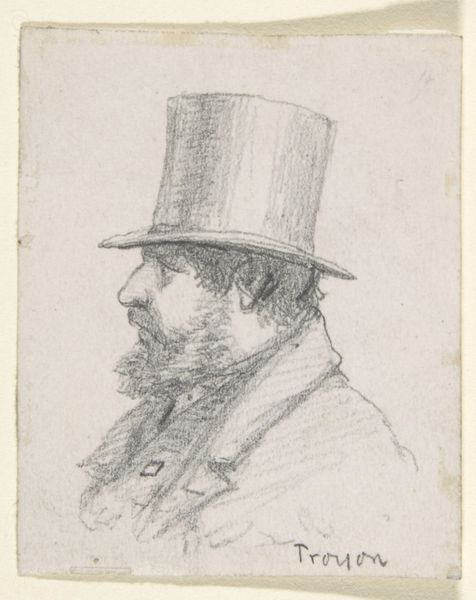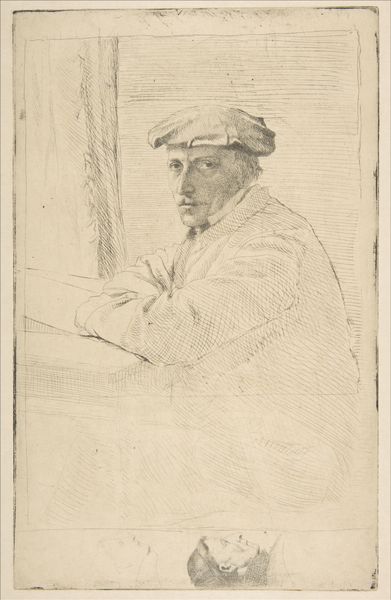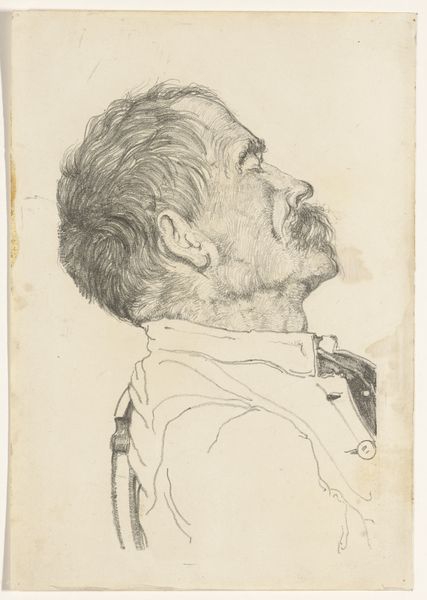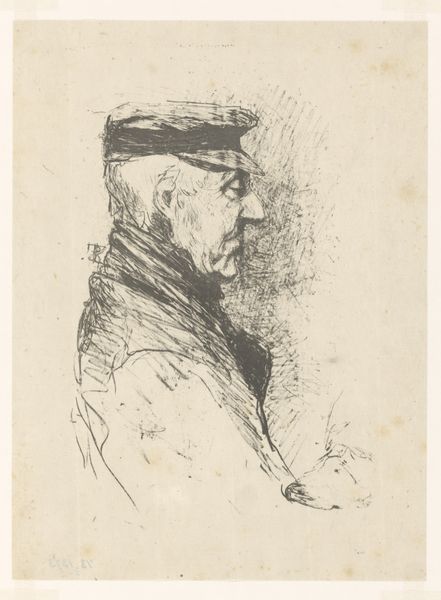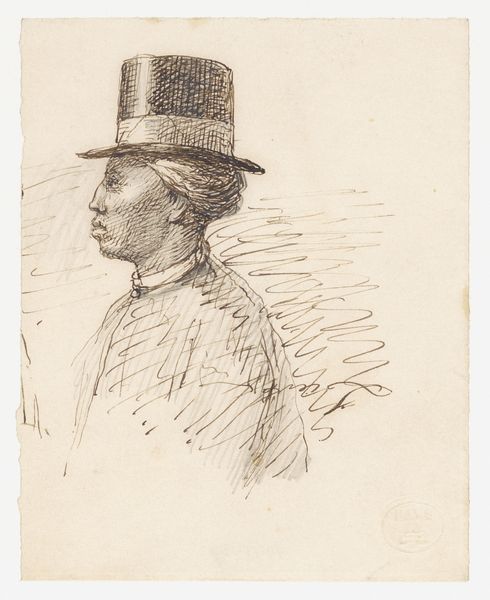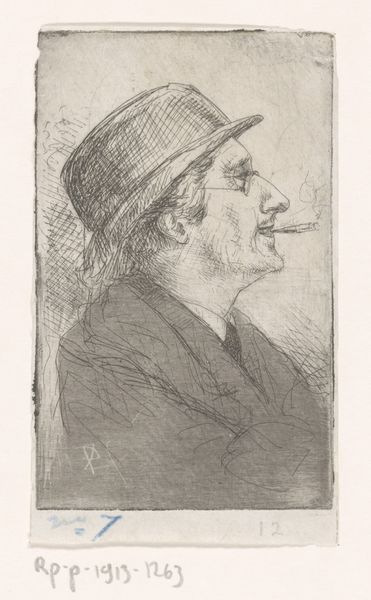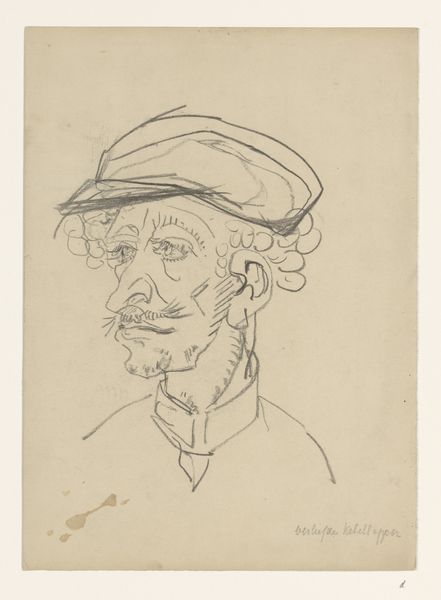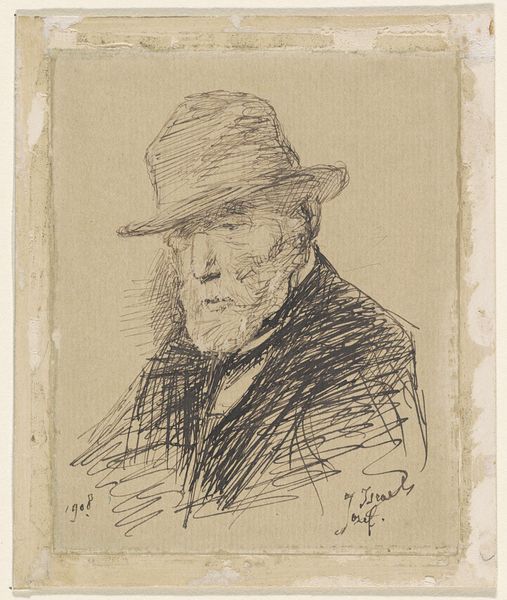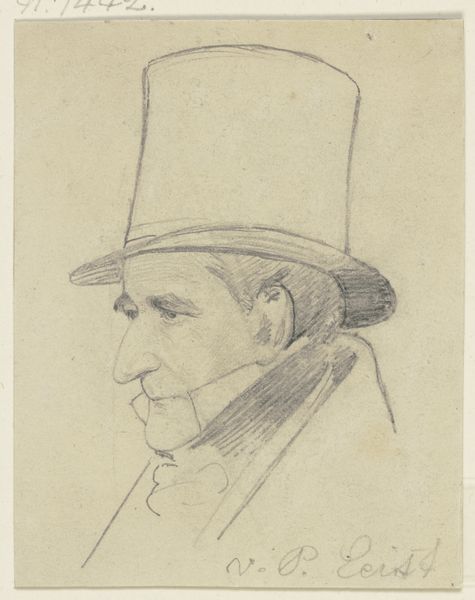
drawing, ink, pencil
#
portrait
#
drawing
#
pencil sketch
#
ink
#
pencil drawing
#
pencil
#
portrait drawing
Dimensions: 248 mm (height) x 149 mm (width) (bladmaal)
Curator: This is Carl Thomsen's portrait of the painter Peter Ilsted, likely rendered sometime in the 1880s. It’s currently held here at the SMK. Editor: I’m immediately drawn to the economy of the lines; the raw quality of the materials creates this intimate sensibility. It looks very modern, almost unfinished. Curator: Precisely. Understanding this image requires placing it within a specific social and historical frame. These artists were part of a generation grappling with emerging modernism. Their portrayals often reflect their relationships and dialogues within their artistic circles. Ilsted was Vilhelm Hammershoi's brother-in-law, for example. These domestic and professional partnerships greatly informed their production. Editor: Yes, and when we look at it in terms of production and materials, we must consider the artist's hand, the labor involved in creating this level of detail with what seems to be readily available, relatively inexpensive materials such as pencil and ink on paper. It challenges the more bombastic or classically focused oil paintings that would also be made at this time. The use of hatching gives a kind of three-dimensionality to the form and the weightiness of the cap, it shows a focus on the working man rather than some aristocrat in his finery. Curator: Definitely, the understated nature of the portrait allows us to engage with a complex history, from shifting class structures to the evolving definition of "art" itself. How is masculinity negotiated? Where does Ilsted find himself within Copenhagen's cultural landscape? What artistic influences impacted him during this time period? Editor: You make it seem like the image opens onto an entire world. And thinking materially, these were working-class men, portraying one another within their means using the things at hand; sketchbooks were critical tools in this creative process. It becomes an exercise in their lived material world, even beyond its obvious presentation of the artist, Ilsted. Curator: It's a compelling piece for sure. It demonstrates how portraits, even those seemingly simple in medium, carry complex socio-political significance. Editor: And shows how accessible, mundane materials and production methods can elevate art from its stuffy, classical roots to something vibrant and almost immediate in terms of our own engagement.
Comments
No comments
Be the first to comment and join the conversation on the ultimate creative platform.
